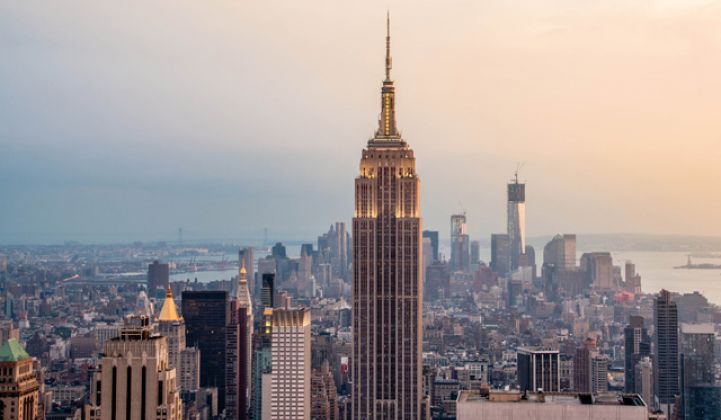New York Governor Andrew Cuomo has directed the state’s department of public service to enact a new clean energy standard that calls for half of the electricity consumed in the state to come from clean and renewable resources.
Under the Reforming the Energy Vision proceeding, New York already had a goal of 50 percent renewables by 2030, but the Department of Public Service will now codify that goal.
“By mandating a Clean Energy Standard, we ensure that this goal is converted from aspirational to actionable,” Cuomo wrote in the letter to the commission. The regulators will have to develop the standard by June 2016. The state’s 2015 Energy Plan already calls for cutting carbon emissions 40 percent by 2030.
New York gets more than 10 percent of its electricity capacity from hydro. Pumped storage and wind each account for about 4 percent of capacity as well. As a percentage of electricity consumption, however, renewables and hydro account for about 25 percent.
New York is now in elite company in terms of RPS requirements. Earlier this year, California raised its RPS from 33 percent to 50 percent, Hawaii mandated 100 percent renewables by 2045, and Vermont passed a bill for 75 percent renewables by 2032.
But New York has a unique RPS operating model. Instead of each investor-owned utility being responsible for procuring renewables, utilities collect an RPS charge from customers, which go to a fund run by New York State Energy Research and Development Authority (NYSERDA).
NYSERDA then administers the RPS program through small- and large-scale projects. The large-scale portion of the program has had 10 solicitations that have contracted about 2 gigawatts of power.
New York is also unique in that the new RPS should be increasingly achievable under the Reforming the Energy Vision proceeding. The regulatory overhaul seeks to eliminate electricity peaks in the New York, spur customer demand for distributed, clean energy solutions, and transform the distribution utilities into clean energy platform providers.
By right-sizing the power system and eliminating peaks, fewer fossil-fuel peaker plants will be needed. Additionally, utilities will be asked to slash the nearly 9 percent in losses on the transmission and distribution systems, which will further drive down generation needs.
Cuomo also asked the commission on Wednesday to develop a process to prevent the premature retirement of upstate nuclear plants during the transition to more renewables. Nuclear energy accounts for 14 percent of electricity production in New York and has emerged as a messy battleground for Cuomo. He has called repeatedly for the closing of Entergy’s Indian Point plant, while trying to block the closure of upstate plants that are losing money in wholesale markets.
As cheap natural gas and increasingly cost-effective renewables come on the system, nuclear energy is having trouble competing. Cuomo said in his letter to the commission that closing upstate nuclear plants “would eviscerate the emission reductions achieved through the state’s renewable energy programs.”
As of now, it’s unclear what measures the commission may adopt to keep the plants open.
To encourage faster development of its solar market, New York recently lifted its net metering cap, and the state’s Green Bank and Green Jobs-Green New York program continue to invest in solar.
Next June will be a busy month for the New York regulators, as the utilities are also expected to file their distributed system implementation plans that month.



